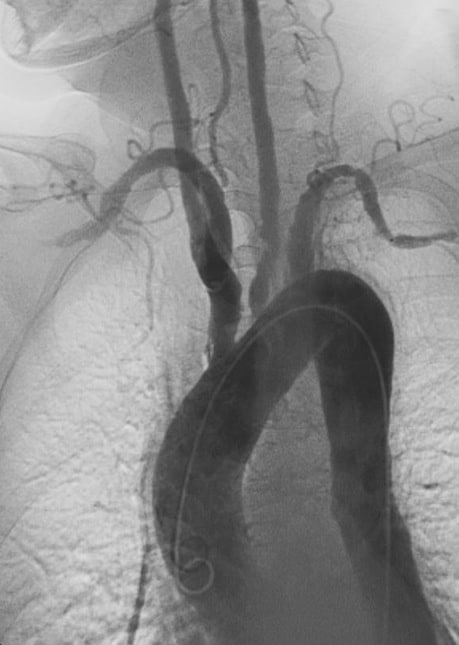
Arteritis, Takayasu
Takayasu’s arteritis (TA), also known as aortic arch syndrome, nonspecific aortoarteritis, and pulseless disease,: 841 is a form of large vessel granulomatous vasculitis with massive intimal fibrosis and vascular narrowing, most commonly affecting young or middle-age women of Asian descent, though anyone can be affected. It mainly affects the aorta (the main blood vessel leaving the heart) and its branches, as well as the pulmonary arteries. Females are about 8–9 times more likely to be affected than males.Those with the disease often notice symptoms between 15 and 30 years of age. In the Western world, atherosclerosis is a more frequent cause of obstruction of the aortic arch vessels than Takayasu’s arteritis. Takayasu’s arteritis is similar to other forms of vasculitis, including giant cell arteritis which typically affects older individuals. Due to obstruction of the main branches of the aorta, including the left common carotid artery, the brachiocephalic artery, and the left subclavian artery, Takayasu’s arteritis can present as pulseless upper extremities (arms, hands, and wrists with weak or absent pulses on the physical examination) which may be why it is also commonly referred to as the “pulseless disease.” Involvement of renal arteries may lead to a presentation of renovascular hypertension.
Read More About Arteritis, Takayasu

